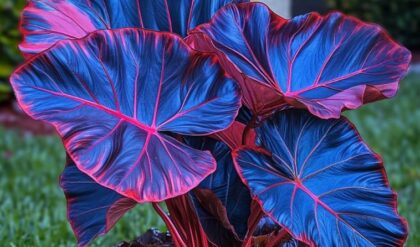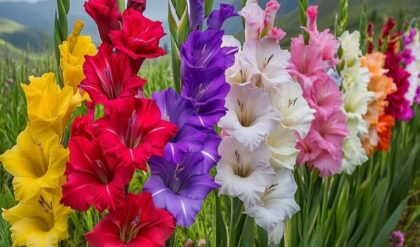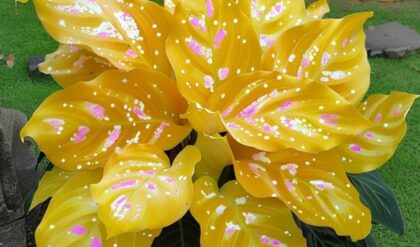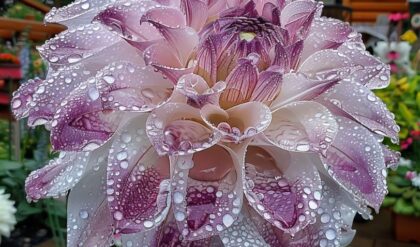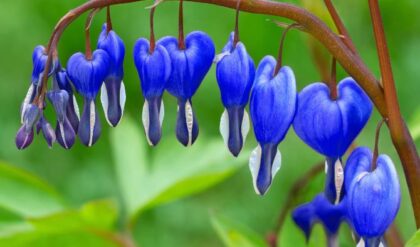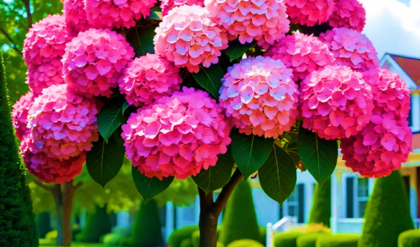Lily of the Valley, known scientifically as Convallaria majalis, embodies an enchanting blend of beauty and symbolism. Often associated with purity and sweetness, this delicate flower is a beloved addition to gardens, celebrated not just for its striking appearance but also for its captivating fragrance. In exploring how to grow and care for these flowers, we can appreciate not only their horticultural requirements but also the deeper connections they may foster in our gardens and lives.
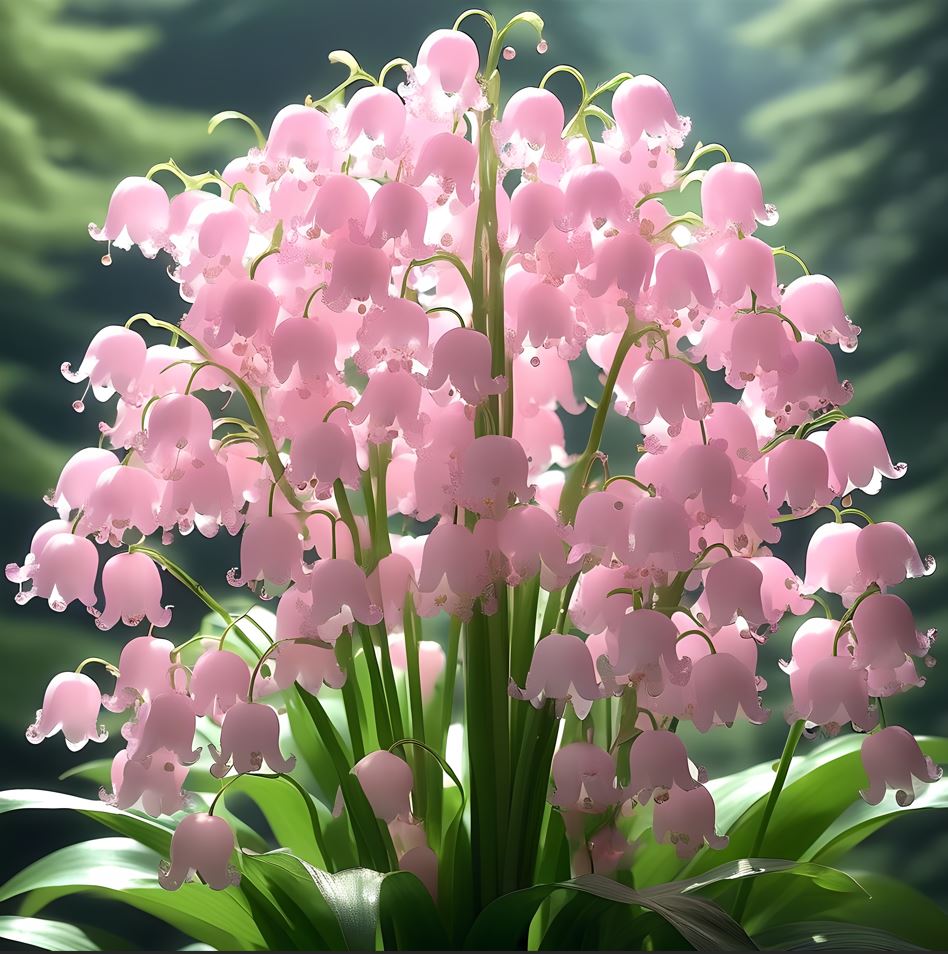
Understanding the Basics of Growth
Lily of the Valley is a perennial plant that blooms in the spring, captivating onlookers with its delicate, bell-shaped flowers that dangle in clusters. These flowers are known for their sweet, intoxicating fragrance, which has earned them a place in many traditional perfumes and cosmetics. Beyond their alluring scent, the plant’s broad, lance-shaped leaves and slender stems contribute to its overall charm, creating a harmonious and visually striking display.
Life cycle of Lily of the Valley
Lily of the Valley plants emerge from the ground in the early spring, often as one of the first flowers to bloom after the winter thaw. The plants grow from underground rhizomes, which are horizontal stems that spread outward, allowing the flowers to form dense, carpet-like colonies. As the weather warms, the plant’s foliage unfurls, and the delicate flower clusters begin to appear, typically in late spring or early summer.
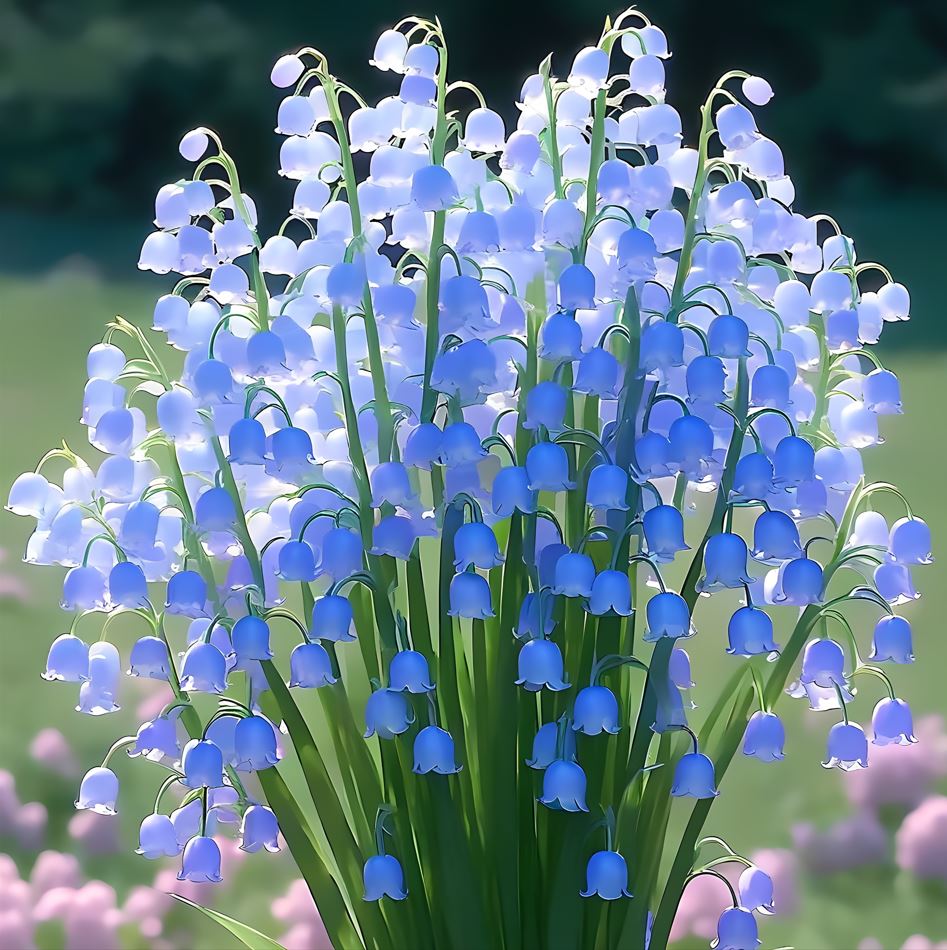
After the blooming period, the plant’s focus shifts to replenishing its energy reserves for the following year. The green leaves continue to photosynthesize, channeling resources back into the rhizomes and root system. This process is essential for ensuring a robust display of flowers in the seasons to come. As the year winds down, the foliage will eventually die back, leaving the rhizomes to rest and prepare for their next annual awakening.
Growth habits and structure
Lily of the Valley is a low-growing perennial, typically reaching a height of 6 to 12 inches (15 to 30 cm) when in bloom. The plant’s delicate, arching stems emerge from a dense, spreading carpet of lush, green foliage. Each stem supports a cluster of 4 to 15 bell-shaped flowers, creating a graceful, cascading effect that is both visually appealing and fragrant.
The plant’s underground rhizomes are the key to its ability to spread and colonize an area. As the rhizomes expand, they send up new shoots, resulting in a dense, mat-like growth habit. This aggressive spreading can be both a blessing and a challenge, as gardeners must balance the plant’s rapid expansion with maintaining a desired size and appearance.
Ideal Conditions for Planting
Lily of the Valley thrives best under specific environmental conditions. These low-growing perennials prefer partial to full shade, making them ideal for woodland gardens or areas beneath larger trees where sunlight is intermittent. This unique habitat requirement invites gardeners to think creatively about their landscape design.
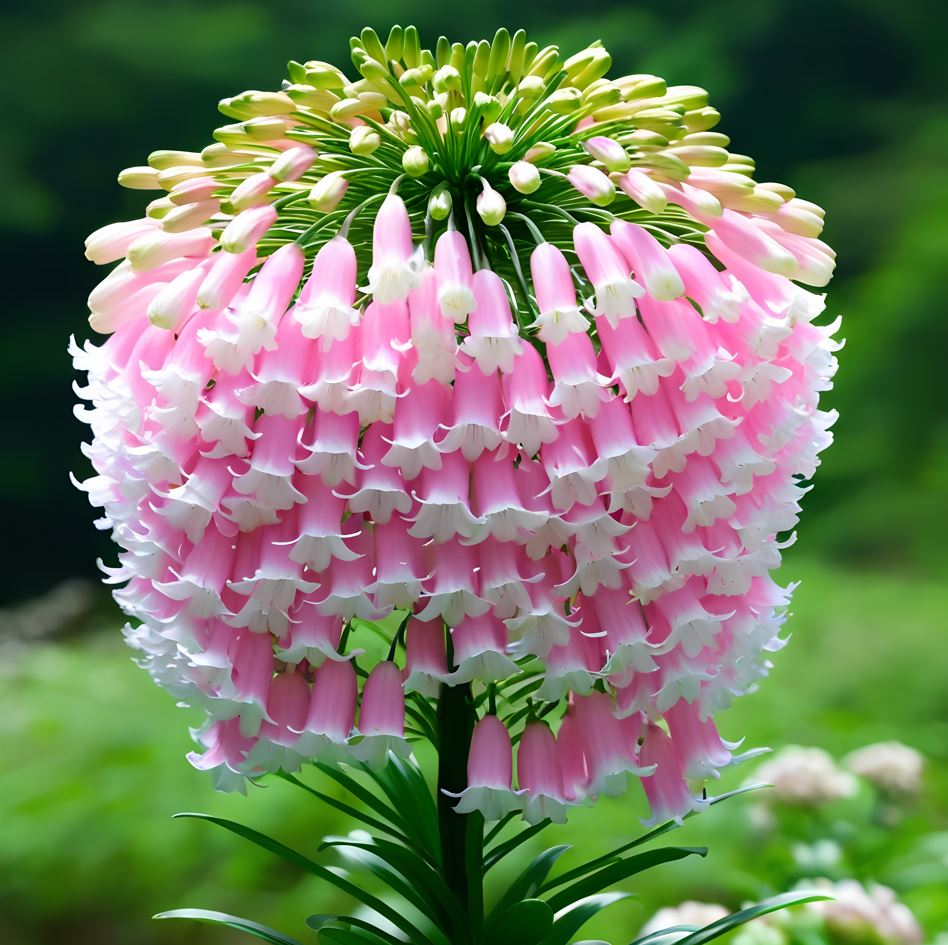
Light requirements: shade versus sunlight
Lily of the Valley is not well-suited for areas that receive full, direct sunlight throughout the day. The plant’s delicate foliage and flowers can become scorched or wilt in intense, prolonged sunlight. Instead, these plants thrive in partially shaded areas, where they receive dappled sunlight or a few hours of direct morning or evening sun.
Gardeners can take advantage of this preference by planting Lily of the Valley in areas that are naturally shaded, such as under the canopy of trees or along the north-facing side of a building. Alternatively, you can create artificial shade by using trellises, arbors, or other structures to filter the sunlight. By carefully considering the light conditions in your garden, you can ensure that your Lily of the Valley plants receive the optimal amount of shade to support their growth and flowering.
Soil preferences: richness and drainage
In addition to their shade requirements, Lily of the Valley plants prefer a rich, well-drained soil. The soil should be composed of a mix of organic matter, such as compost or well-rotted leaf litter, to provide the necessary nutrients for the plants to thrive.
Good drainage is also crucial, as Lily of the Valley is susceptible to root rot in overly wet or poorly draining soils. The ideal soil should have a pH in the slightly acidic to neutral range, typically between 5.5 and 7.0. If your garden has heavy, clay-based soil, consider amending it with organic matter or sand to improve drainage and aeration.
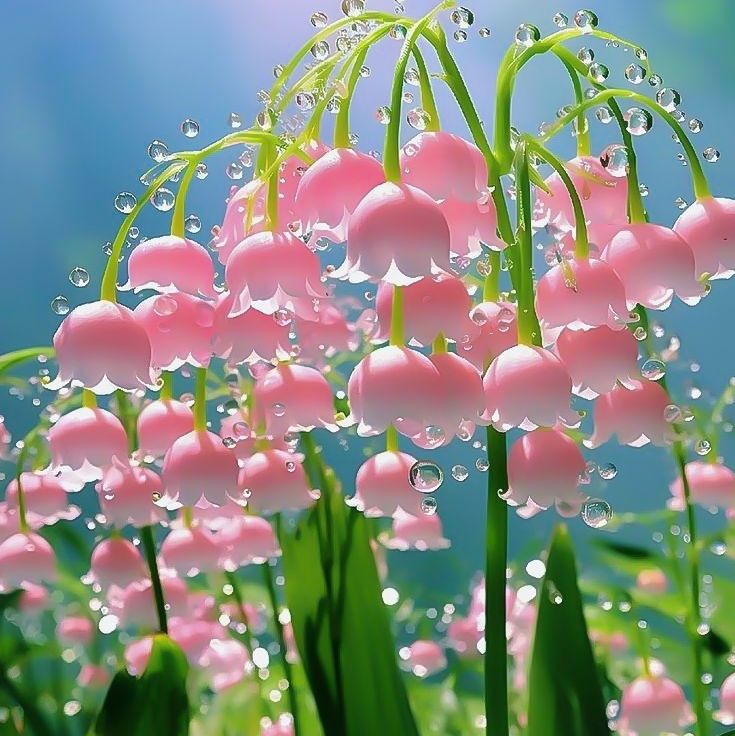
Moisture levels: importance of consistent watering
While Lily of the Valley plants prefer moist, well-drained soils, they do not tolerate waterlogged or constantly saturated conditions. Consistent moisture is key, as these plants can suffer from drought stress or become susceptible to disease if the soil dries out too much.
During the growing season, especially in hot, dry weather, be sure to water your Lily of the Valley plants regularly, keeping the soil moist but not soaked. Aim to provide about 1 inch (2.5 cm) of water per week, either through natural rainfall or supplemental irrigation. Mulching around the plants can also help retain moisture and suppress weed growth.
Avoid allowing the soil to become completely dry, as this can cause the foliage and flowers to wilt or become stunted. At the same time, be mindful of overwatering, as this can lead to root rot and other fungal issues. By maintaining consistent, moderate moisture levels, you can create the ideal conditions for your Lily of the Valley plants to thrive.
Choosing the Right Location in Your Garden
When planning where to incorporate Lily of the Valley into your garden, it’s essential to assess the environmental conditions and consider the various design elements that can enhance their visual impact and overall integration into the landscape.
Assessing your garden’s environment
Before selecting a planting site, carefully evaluate the light, soil, and moisture conditions in your garden. Identify areas that receive the appropriate amount of shade, have well-drained soil, and can provide the consistent moisture levels that Lily of the Valley requires. This assessment will help ensure that the plants are placed in a location where they can flourish and reach their full potential.
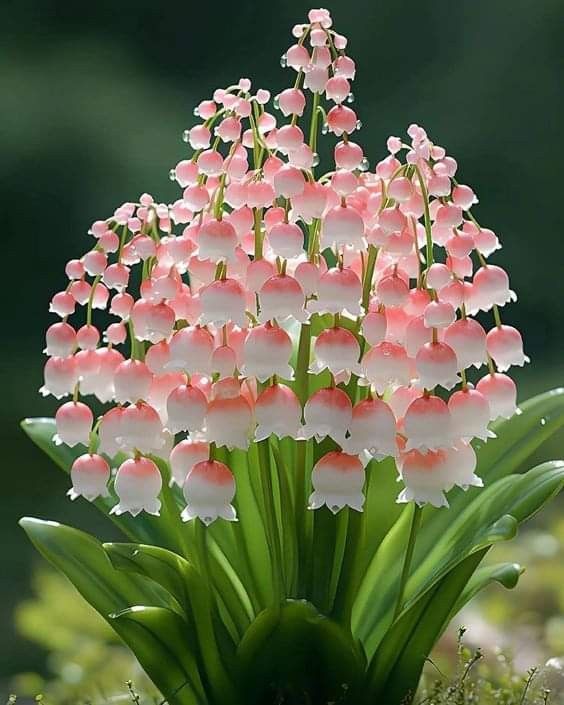
Companion planting considerations
Lily of the Valley can work beautifully as part of a diverse planting scheme, complementing other shade-loving perennials, shrubs, or groundcovers. Consider pairing them with plants that share similar care requirements, such as ferns, hostas, or woodland wildflowers. The delicate, bell-shaped flowers of the Lily of the Valley can create a striking contrast when combined with larger-leaved plants or those with bold, colorful blooms.
Transforming neglected spaces into vibrant displays
One of the unique qualities of Lily of the Valley is their ability to thrive in areas that may be overlooked or underutilized in the garden. Consider planting them in shaded corners, along the edges of wooded areas, or beneath the canopy of mature trees. By transforming these neglected spaces into vibrant floral displays, you can breathe new life into your garden and create unexpected pockets of beauty and fragrance.
Propagation Techniques
Lily of the Valley can be propagated through various methods, with rhizome division being one of the most effective and rewarding approaches. Understanding the principles of propagation not only allows you to expand your Lily of the Valley population but also fosters a deeper connection with these enchanting flowers.
Rhizome division: step-by-step process
Dividing the underground rhizomes of Lily of the Valley is a straightforward and efficient way to propagate the plants. The best time to undertake this process is in the fall, after the foliage has died back and the plants are entering their dormant period.
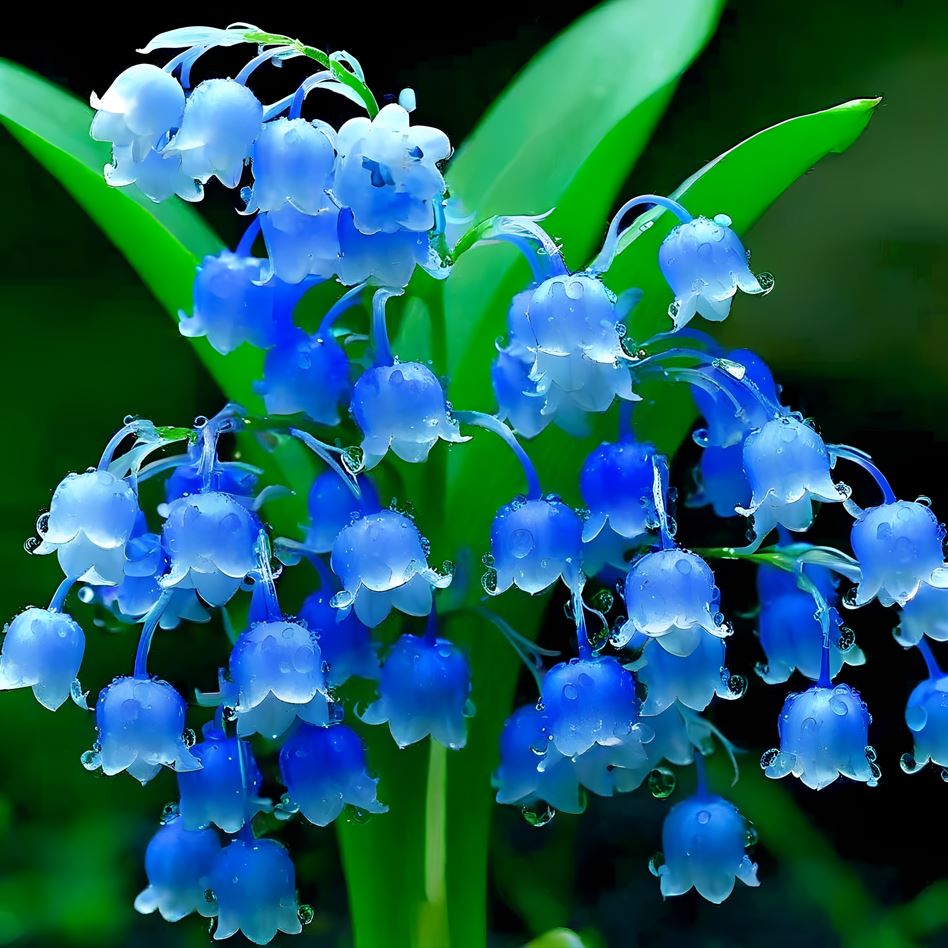
To begin, use a garden fork or shovel to carefully lift the entire clump of Lily of the Valley from the soil. Gently shake off any excess dirt to expose the rhizomes. Using a sharp, sterilized knife or pruners, carefully divide the rhizomes into smaller sections, ensuring that each section has at least one growing point or “eye.”
Replant the divisions immediately in their new locations, spacing them about 6 to 12 inches (15 to 30 cm) apart. Water the newly planted divisions thoroughly, and continue to keep the soil consistently moist until new growth emerges in the spring. This process not only multiplies your Lily of the Valley population but also invigorates the plants, encouraging vigorous growth and abundant blooms in the years to come.
Seed propagation: advantages and challenges
While rhizome division is the more common method of propagation, Lily of the Valley can also be grown from seed. However, seed propagation can be more challenging and require more patience. The seeds typically take 12 to 18 months to germinate, and the resulting plants may not be true to the parent variety.
If you do choose to propagate Lily of the Valley from seed, it’s essential to collect the ripe, red berries in the late summer or early fall. Carefully extract the small, white seeds from the berries and sow them immediately in a partially shaded, well-draining seed-starting mix. Keep the soil consistently moist, and be prepared to wait patiently for the seedlings to emerge.
Despite the longer timeline, seed propagation can be a rewarding experience, as it allows you to experiment with different genetic variations and potentially introduce new cultivars to your garden. Just be mindful that the success rate may be lower compared to dividing established rhizomes.
Sharing divisions with fellow gardeners
One of the joys of propagating Lily of the Valley through rhizome division is the opportunity to share your excess divisions with fellow gardening enthusiasts. This act of sharing not only helps to expand the presence of these enchanting flowers in local gardens but also fosters a sense of community among like-minded plant lovers.
When dividing your Lily of the Valley clumps, consider potting up the extra divisions and offering them to friends, neighbors, or members of a local gardening club. This simple gesture can spark new friendships, inspire others to grow Lily of the Valley, and contribute to the overall beautification of your community. By passing on your plant knowledge and generously sharing your garden’s abundance, you can create a ripple effect of joy and appreciation for these delicate, fragrant flowers.
Caring for Your Plants
Maintaining the health and vigor of your Lily of the Valley plants requires ongoing attention and care throughout the seasons. Understanding the plant’s life cycle and addressing any potential challenges can help ensure a bountiful display of blooms year after year.
Seasonal maintenance: spring to fall care
The care regimen for Lily of the Valley varies with the changing seasons. In the spring, as the plants emerge from their winter dormancy, be sure to remove any dead or damaged foliage to allow the new growth to thrive. Gently loosen the soil around the plants, taking care not to disturb the shallow root systems, and apply a layer of organic mulch to retain moisture and suppress weeds.
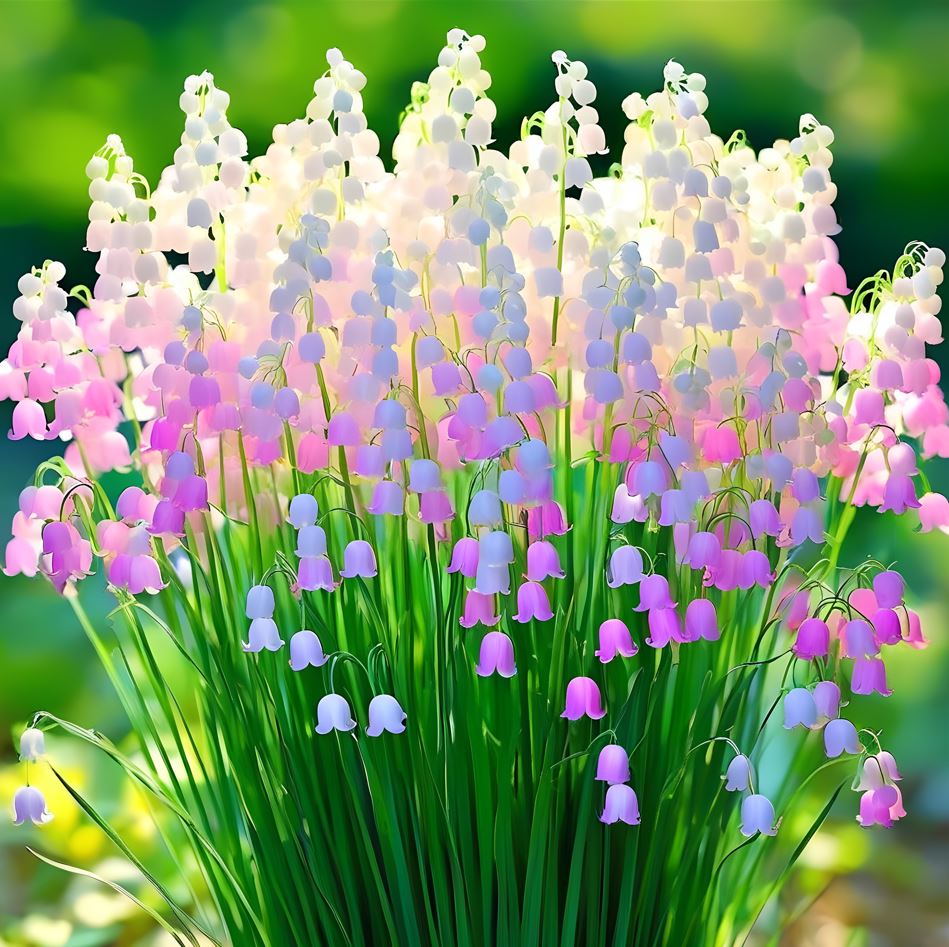
Throughout the growing season, continue to water the plants regularly, ensuring the soil remains consistently moist but not waterlogged. After the flowering period concludes in late spring or early summer, resist the temptation to remove the foliage too soon. Allowing the leaves to remain and continue photosynthesizing is crucial for building up the plant’s energy reserves for the following year’s blooms.
As autumn approaches, the foliage will naturally begin to die back. At this point, you can carefully remove the spent leaves and stems, but avoid cutting the plants to the ground, as this can weaken them. Instead, leave a few inches of the stem above the soil to protect the rhizomes during the winter dormancy.
Post-flowering care: leaving foliage intact
One of the crucial aspects of caring for Lily of the Valley is the proper management of the plant’s foliage after the flowering period. It may be tempting to remove the leaves as soon as the blooms have faded, but this can have a detrimental effect on the plant’s long-term health and future flower production.
The green leaves play a vital role in the plant’s life cycle, continuing to photosynthesize and channel energy back into the rhizomes and root system. By leaving the foliage intact, you allow the Lily of the Valley to replenish its resources, setting the stage for a robust display of flowers in the following spring.
Only when the leaves have naturally died back and turned yellow or brown should you consider removing them. This typically occurs in the late summer or early fall, signaling the plant’s transition into its dormant period. By respecting the plant’s life cycle and allowing the foliage to fulfill its purpose, you can ensure a consistent and bountiful flowering season year after year.
Pest management strategies
While Lily of the Valley plants are generally quite resilient, they can occasionally fall victim to various pests and diseases. One common issue is the presence of aphids, which can feed on the plant’s leaves and stems, causing distortion and weakening the overall plant.
To address aphid infestations, consider using a gentle, insecticidal soap or neem oil spray, which can effectively control the pests without causing harm to the plant or surrounding beneficial insects. Regularly inspecting the foliage and removing any affected leaves or stems can also help prevent the spread of these and other common pests.
In addition to pest management, be vigilant for signs of fungal diseases, such as powdery mildew or leaf spot. Maintaining proper soil drainage, adequate air circulation, and avoiding excessive moisture on the foliage can help prevent the development of these issues. If a problem does arise, consult with a local horticulturist or use organic fungicides sparingly to address the concern.
By adopting a holistic approach to pest and disease management, you can protect the health and vitality of your Lily of the Valley plants while also promoting a balanced, sustainable ecosystem in your garden.
Managing Invasive Tendencies
One of the unique characteristics of Lily of the Valley is its ability to spread rapidly through underground rhizomes, which can lead to the plant becoming invasive if left unchecked. Understanding how to manage this aggressive growth habit is crucial for maintaining the desired appearance and balance within your garden.
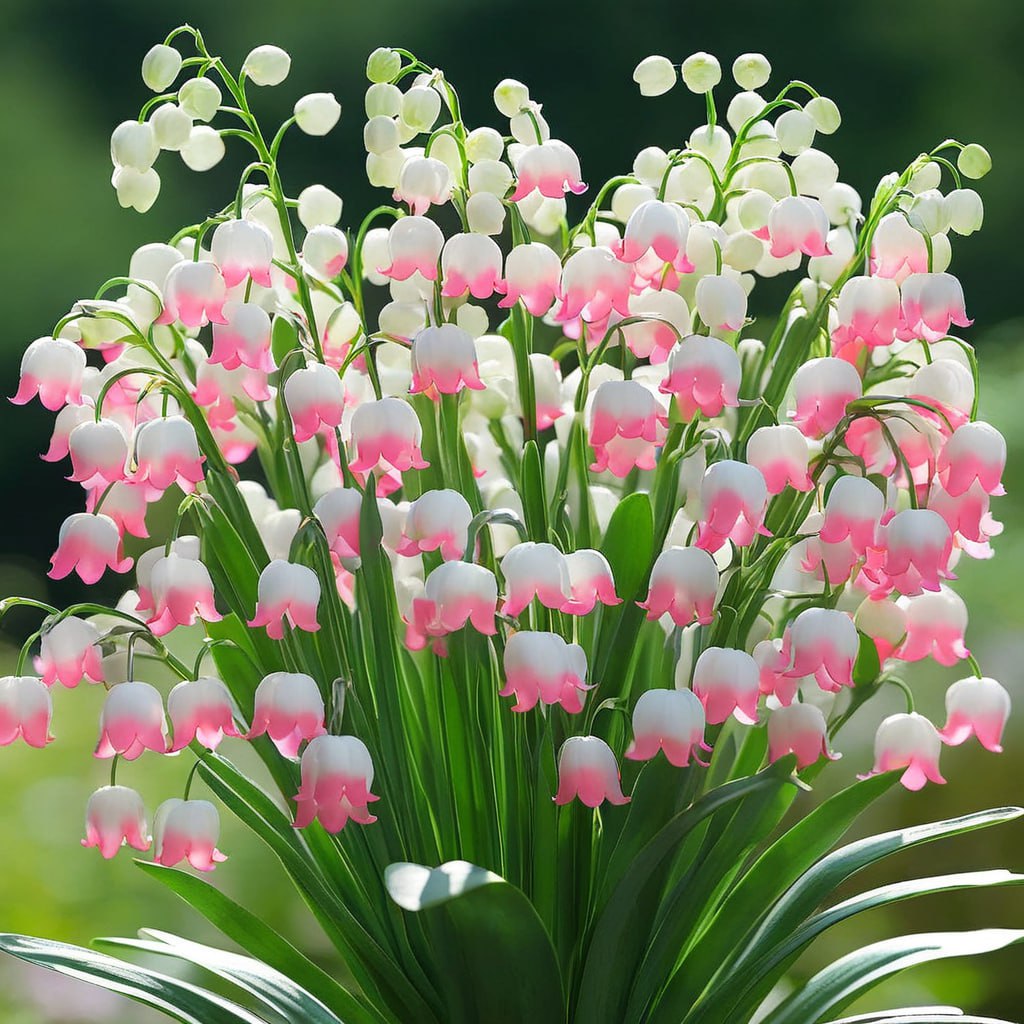
Recognizing signs of overgrowth
As Lily of the Valley plants mature, they can begin to spread more aggressively, forming dense, mat-like colonies that can encroach on nearby plantings or desired garden spaces. Signs of overgrowth may include the appearance of new shoots emerging outside the original planting area, or the plant’s colonization of areas where it was not originally intended.
Monitoring the Lily of the Valley’s growth and keeping an eye on its expansion is essential to prevent it from becoming a dominant or disruptive presence in your garden. Regular observation and proactive management can help you maintain the plant’s desired size and location within the landscape.
Controlling spread through regular maintenance
To manage the invasive tendencies of Lily of the Valley, it’s important to establish a routine maintenance schedule. This may involve periodically dividing and replanting the rhizomes to limit their outward growth, or physically removing any unwanted offshoots or encroaching plants.
When dividing the rhizomes, be sure to contain the spread by planting the new divisions in their intended locations or removing them entirely from the garden. Additionally, you can consider installing physical barriers, such as deep-set edging or rhizome-blocking membranes, to help contain the plant’s expansion.
Regular weeding and vigilance are also crucial, as Lily of the Valley can quickly overtake and crowd out other desirable plants in your garden. By maintaining a proactive approach to managing the plant’s growth, you can strike a balance between enjoying the beauty of Lily of the Valley and preventing it from becoming a dominant or disruptive force in your landscape.
Incorporating Lily of the Valley Into Your Garden Landscape
Beyond the practical considerations of growing and caring for Lily of the Valley, there are numerous creative ways to incorporate these enchanting flowers into your garden design. By thoughtfully planning their placement and pairing them with complementary plants, you can enhance both the visual and emotional impact of these delicate blooms.
Aesthetic arrangements and design tips
When considering how to incorporate Lily of the Valley into your garden, think beyond simply planting them in a random or haphazard manner. Instead, approach their placement with an eye for design and visual appeal.
One captivating option is to create sweeping drifts or carpets of Lily of the Valley, allowing the plants to form a lush, seamless groundcover in shaded areas. This creates a sense of cohesion and invites the viewer to immerse themselves in the delicate, bell-shaped flowers.
Alternatively, you can strategically position Lily of the Valley along pathways or at the edges of garden beds, using their trailing habit to create a soft, cascading effect. This can help to transition between different garden areas and guide the eye through the landscape.
When pairing Lily of the Valley with other plants, consider the contrasting textures and colors that can enhance their visual impact. For example, the delicate, arching stems of the Lily of the Valley can beautifully complement the bold, broad leaves of hostas or the vibrant blooms of spring-flowering bulbs.
Creating pathways and borders
One enchanting way to incorporate Lily of the Valley into your garden is by using them to create meandering pathways or define the edges of garden beds. The plant’s tendency to spread and form dense colonies makes it an ideal choice for lining walkways or trailing along the perimeter of a planting area.
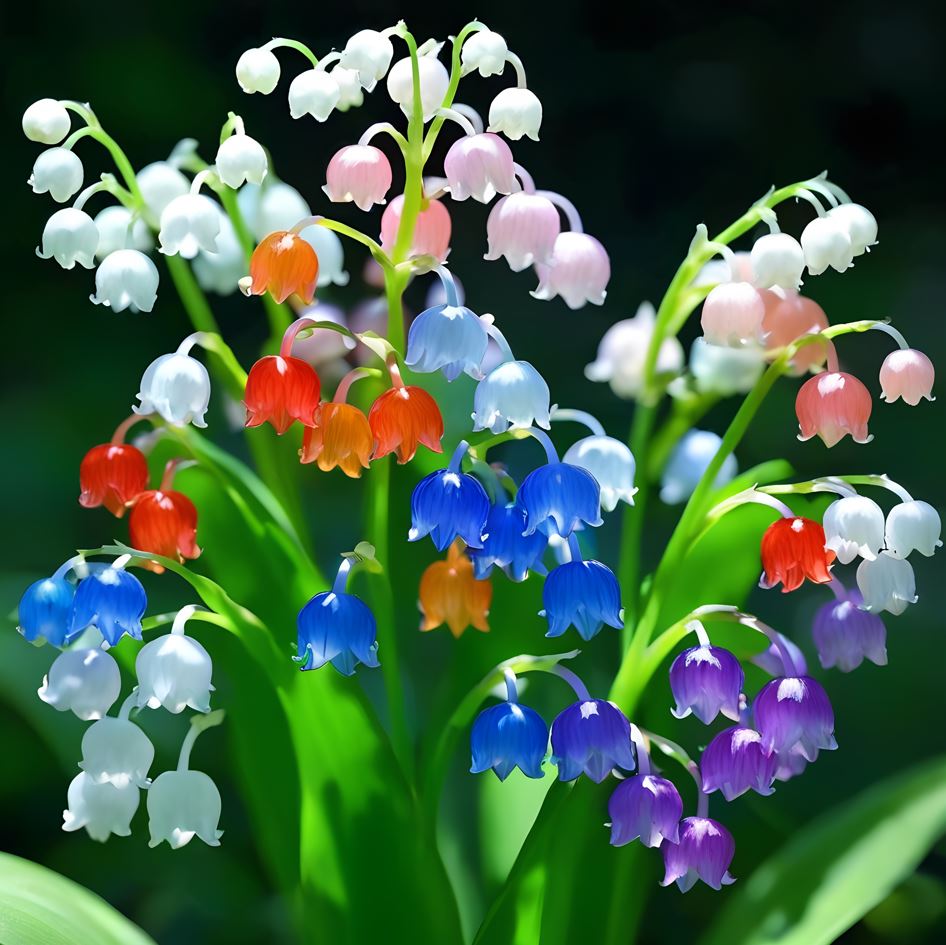
Imagine a winding path through a shaded woodland garden, whereLily of the Valley guides visitors with its delicate white blooms and sweet, enchanting fragrance. Planting these flowers in this manner invites a sensory experience as one walks through the landscape, enhancing the feeling of tranquility often sought in garden spaces.
In addition to creating soft borders, consider using Lily of the Valley in clusters to demarcate transitions from one garden zone to another. Their height and fullness provide a clear visual cue while maintaining an inviting atmosphere. Pair them with stones or wood along walkways to emphasize their rustic charm and enhance your garden’s natural aesthetic.
Blending with other plants for visual impact
To achieve harmony within your garden, blending Lily of the Valley with complementary shapes, colors, and sizes is essential. Given their shade-friendly nature, consider grouping them with other shade-tolerant plants like ferns or astilbes. The varying textures will provide visual interest, creating a layered effect that invites exploration.
Another approach is to juxtapose the delicate bell-shaped flowers against bolder foliage plants, such as Brunnera macrophylla or ligularia. This not only highlights the fine intricacy of Lily of the Valley but also smooths out transitions between different foliage types. Such combinations offer a cohesive look while allowing each plant’s unique qualities to shine through.
Creative arrangements featuring animal sculptures or decorative elements can further enhance the beauty of your Lily of the Valley display. Place small statues or lanterns amid the plants, breaking up expanses of green and adding points of interest while reflecting the serene beauty of your garden’s narrative.
Symbolism and Emotional Resonance
Beyond their exquisite appearance, Lily of the Valley holds profound symbolism and emotional weight for many gardeners and flower enthusiasts. Rooted deeply in folklore and culture, they embody messages of purity, humility, and rebirth, making them more than just a floral decoration.
Representations of purity and rebirth
In various cultures, Lily of the Valley has been likened to themes of purity, innocence, and spiritual awakening. Its delicate blossoms are often associated with spring, a season renowned for renewal and fresh beginnings. Traditionally, these flowers have found their way into ceremonies celebrating love, new life, and new ventures, reinforcing their poignant symbolism.
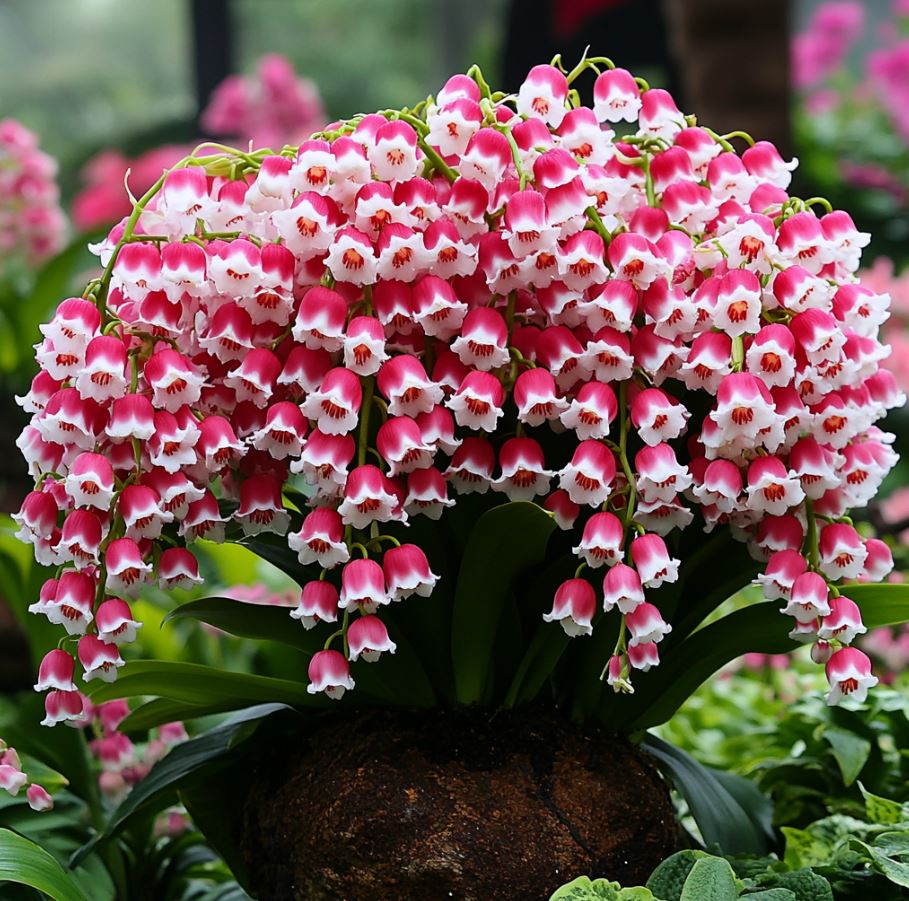
From weddings to christenings, the inclusion of Lily of the Valley in such milestones speaks volumes. It echoes sentiments of hope and innocence, wrapping those moments in profundity. By cultivating these flowers, gardeners participate organically in this legacy, imbuing their personal gardens with emotional resonance and timeless connections.
Using flowers to convey personal messages
In practical terms, Lily of the Valley can be used thoughtfully as a means of expressing feelings or sentiments without words. Gifting someone a bouquet rich with these tiny blooms can signify gratitude, encouragement, or best wishes for new journeys. Their subtle fragrance adds a sensory delight that lingers in memory and enhances their emotional weight.
Consider incorporating Lily of the Valley into your arrangements during significant gatherings or celebrations. Allow guests to experience both the visual beauty and the heartfelt meanings associated with this lovely flower. With a little creativity, connecting the emotional significance of the Lily of the Valley with experiences shared among loved ones can foster deeper bonds.
Troubleshooting Common Issues
Maintaining healthy Lily of the Valley plants requires vigilance regarding potential pests and diseases. While growing these resilient flowers, gardeners may encounter issues affecting their overall well-being that require prompt identification and management.
Identifying and treating diseases
Various diseases can affect Lily of the Valley, leading to unsightly leaves or stunted growth. Fungal infections are particularly common, so being observant allows you to spot ailments early. Yellowing or browning leaves are initial signs demanding attention, whereas black spots can indicate more severe fungal presence.
Upon identifying an issue, treat it promptly by improving air circulation through spacing and pruning unnecessary foliage. If needed, organic fungicides can offer relief while prioritizing environmental health. Utilizing these methods helps maintain a thriving garden and prevents disease spread to neighboring plants.
Addressing soil and environmental problems
Soil quality is fundamental in ensuring Lily of the Valley grows robustly. Heavy clay soils that retain excessive moisture can lead to root rot or other dampness-related problems. Conversely, sandy soils lacking nutrients can hinder growth altogether. Conducting a soil test can shed light on nutrient deficiencies, pH levels, and moisture retention concerns.
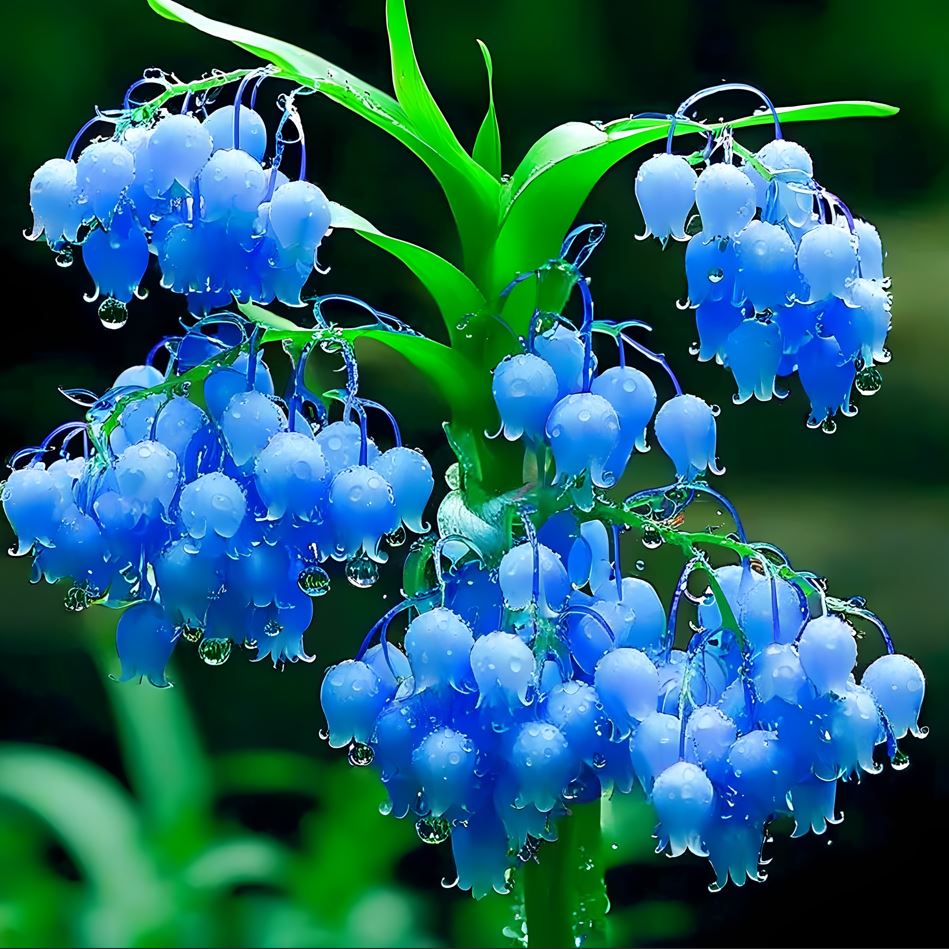
By amending soil with organic matter like compost, you not only improve drainage but also enrich the ground for better nutrient uptake. Additionally, mulching can help maintain consistent hydration while suppressing weeds that compete for vital resources. Sustaining optimal conditions empowers your Lily of the Valley to flourish splendidly year after year.
The Role of Lily of the Valley in Ecosystems
Beyond their decorative allure, Lily of the Valley plays an integral role in fostering biodiversity and enhancing ecosystem health in our gardens.
Attracting beneficial insects
When planted in harmony with other flora, the delicate blooms provide nourishment for a range of beneficial insects. Pollinators such as bees and butterflies are drawn to the flowers, facilitating essential pollination services for surrounding plants. Incorporating native companions tailored to local ecosystems bolsters the benefits further, creating enticing habitats that support diverse species.
Impact on local wildlife
The sprawling colonies of Lily of the Valley create shelter and nesting opportunities for small animals and beneficial insects alike. Birds may find refuge among the dense foliage while seeking seeds and smaller insects for sustenance. As an integral part of the garden ecosystem, these plants contribute significantly to the well-being of not just marshy places but a myriad of wildlife thriving near human habitats.
Seasonal Changes and Their Effects
Understanding seasonal changes can enhance your care strategies for Lily of the Valley, aligning gardening practices to ensure they flourish throughout the year.
Adjusting care during different seasons
Each season brings distinct challenges and opportunities for growth. In spring, focus on nurturing new growth with appropriate fertilization and watering practices. As summer arrives, regular monitoring for pests becomes paramount, given the flourishing plant life can attract unwanted guests. During fall, remember to prepare your Lily of the Valley for winter dormancy by gradually reducing water and halting fertilizers.
Being proactive about seasonal shifts encourages healthier growth cycles, culminating in vibrant blooms year after year. Knowing when to adjust cares—stick to a plan while remaining flexible concerning unexpected weather and conditions—fosters harmony with nature.
Preparing for winter dormancy
As autumn gives way to winter, Lily of the Valley prepares for dormancy. Understanding how to cultivate in preparation allows gardeners to establish favorable conditions for rejuvenated growth come spring. Mulching around the base offers insulation against harsh temperatures, helping protect the rhizomes from extreme cold.
Additionally, transitioning care—such as limiting watering or removing dead foliage—underlines respectful recognition of dormant cycles. Creating space for seasonal rest ensures future vitality, establishing a connection between the gardener, plants, and the rhythms of nature.
Creative Uses Beyond Gardening
The versatility of Lily of the Valley expands beyond traditional gardening realms, with creative applications that extend its charm into varied contexts.
Crafting floral arrangements
Utilizing these captivating blooms in floral arrangements adds elegance to any occasion. Their delicate aesthetics make them ideal focal points in bouquets or centerpieces. Combine them with contrasting textures such as rugged greens or vibrant petals to elevate the ensemble further, creating visual harmony while maintaining equilibrium.
When crafting arrangements, consider utilizing various heights and clustering similar varieties together for added impact. Offering Lily of the Valley in well-thought-out designs enables them to symbolize messages effectively, pairing artistry with meaning.
Culinary uses and safety considerations
While less commonly known, Lily of the Valley does have culinary implications worth considering, albeit cautiously. Historically, certain parts of the plant might have appeared in food and beverages, providing flavor alongside intrinsic symbolism. However, it’s crucial to highlight that all parts of the plant are toxic if ingested. Educating others about the importance of safe handling promotes responsible interaction with these beautiful flowers.
Though culinary explorations with Lily of the Valley require circumspection, the flowers can grace events as garnishes or in crafted products that celebrate their beauty while ensuring personal safety. Balancing creativity and knowledge opens doors to new dimensions of appreciation for these lovely blooms.
Conclusion
By understanding the growth, care, and symbolic significance of Lily of the Valley, gardeners can cultivate a richer experience that transcends aesthetic pleasure. These enchanting flowers tell stories interwoven with historical narratives, emotional connections, and ecological value. Ultimately, embracing the multifaceted nature of Lily of the Valley fosters deeper relationships with nature, planting a lasting bond within the community as well. Cultivating unique landscapes, applying thoughtful designs, and sharing messages through flowers become invaluable pathways toward enjoying vibrancy in both our gardens and lives. With faithful tending and respect for their cultural weight, Lily of the Valley transforms mere gardening into meaningful expressions of beauty and intention.
